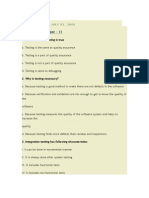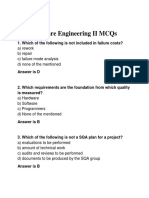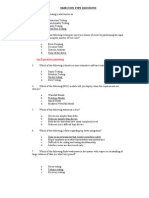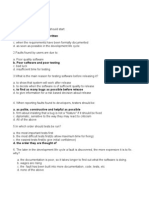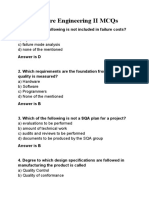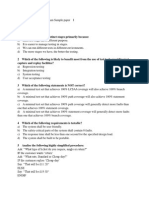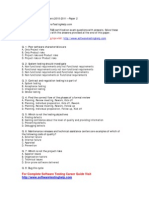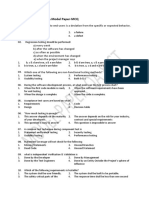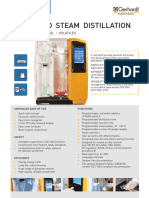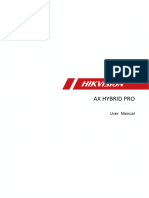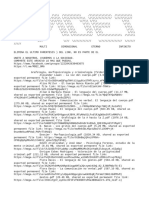0% found this document useful (0 votes)
146 views7 pagesTechnical Questions
The document contains a technical test with 36 multiple choice questions covering topics related to software testing such as test levels, defect life cycle, white box and black box testing techniques, test coverage, and objectives of software testing. The questions test knowledge of terms like functional testing, integration testing, smoke testing, debugging activities, software incident reports, decision coverage, statement coverage, bug prioritization, and definitions of failure, fault masking, drivers, stubs, and latent defects.
Uploaded by
Sai KrishnaCopyright
© © All Rights Reserved
We take content rights seriously. If you suspect this is your content, claim it here.
Available Formats
Download as DOCX, PDF, TXT or read online on Scribd
0% found this document useful (0 votes)
146 views7 pagesTechnical Questions
The document contains a technical test with 36 multiple choice questions covering topics related to software testing such as test levels, defect life cycle, white box and black box testing techniques, test coverage, and objectives of software testing. The questions test knowledge of terms like functional testing, integration testing, smoke testing, debugging activities, software incident reports, decision coverage, statement coverage, bug prioritization, and definitions of failure, fault masking, drivers, stubs, and latent defects.
Uploaded by
Sai KrishnaCopyright
© © All Rights Reserved
We take content rights seriously. If you suspect this is your content, claim it here.
Available Formats
Download as DOCX, PDF, TXT or read online on Scribd
/ 7


